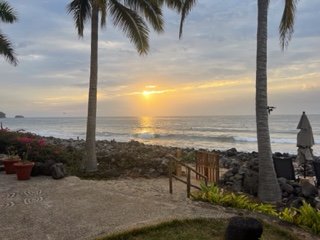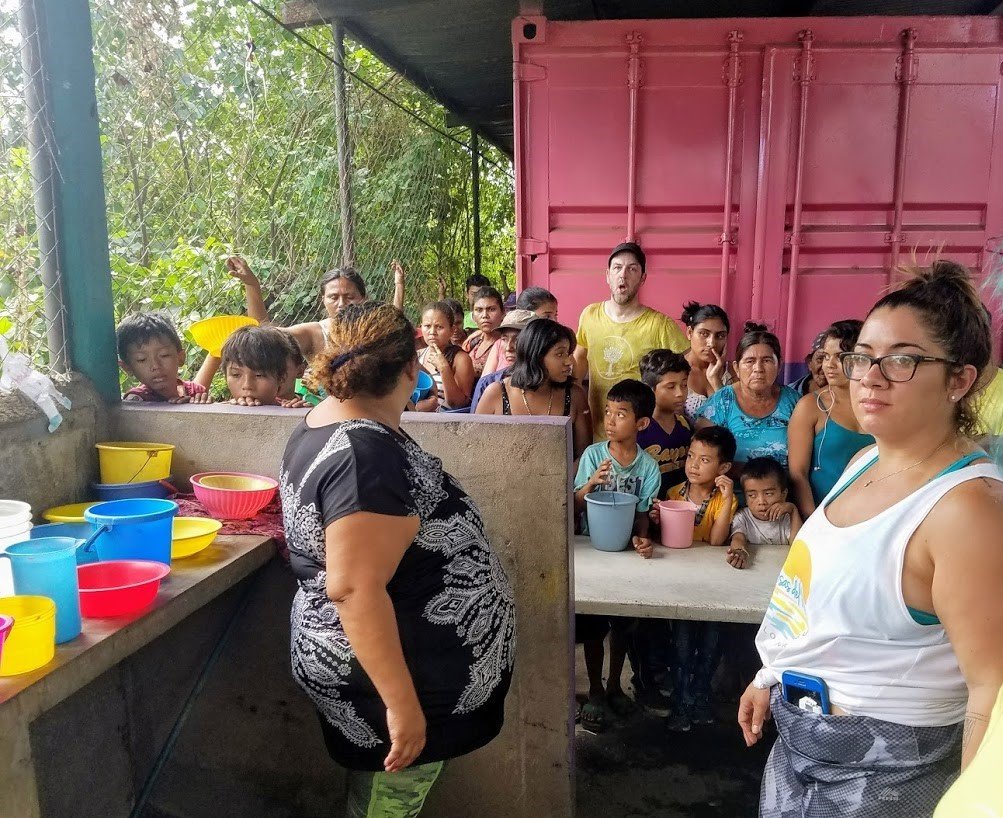The Hidden Benefits of Yoga Retreats
The health benefits of regular yoga practice are well known, and you don’t have to do acrobatic or hot yoga to reap them. I discovered even more benefits from going on yoga retreats. You get to disconnect from the noisy world and maintain a calm center for days instead of just an hour or two, and you meet like-minded people who also want a break from their busy lives.
Mexico
I chose to attend a yoga retreat on the west coast of Mexico this past winter after two years of travel restrictions due to Covid and months of rain in the Pacific Northwest. The hotel/retreat center—Mar de Jade—was the dreamchild of Laura del Valle, a doctor from Mexico City who started a clinic in the remote village of Chacala in 1982. A Zen practitioner, she built Mar de Jade near her clinic and started a farming coop and a Montessori school for village children.
The quiet bay sheltering the retreat center was a far cry from Puerto Vallarta where we’d arrived the previous day. After class in the morning, I walked the mile-long beach into town and chatted with venders who sold wood carvings, jewelry, pineapples, and coconuts. The bay was perfect for swimming since there were no jet skis or throngs of tourists as at beaches further south. I also got to tour the school, farm, and a small factory associated with Mar de Jade.
Excursions are a big draw for me on yoga retreats. In Mexico, a group of us hiked up a nearby volcano with a guide one day. Palm trees and straggler figs at the base of the mountain gave way to mango groves near the top, with gusts of eucalyptus spiking the air on a hot January day. At the summit, we gazed down at Chacala’s serene bay a thousand feet below us. “I used to swim in the caldera when I was young,” the guide told us, pointing to a grassy depression behind us. “But the lake dried up years ago, and now people picnic inside it.”
For me, this was another bonus of doing yoga retreats: the chance to interact with people of other cultures and learn about village life. We ended the trek that day at a remote beach between jagged cliffs, where a boat picked us up for the return to Chacala’s bay. On route, we were treated to a close encounter with a humpback whale and her calf as they frolicked a stone’s throw away.
Cuba
A similar yoga retreat to Cuba in 2019 was even more enlightening. Most Americans find it difficult to travel on their own beyond the usual tourist sites. Yet as part of a quasi-educational or “spiritual” group, we were able to interact with people in the towns we visited. The organizer of Lotus Retreats happened to be my niece, and Loren had close local contacts after leading several retreats there. We practiced yoga for an hour or so each morning at a retreat house outside of Havana, and in the evenings we walked to the beach to stretch in the sand.
One day Loren arranged for a fleet of 1950s Plymouths and Chevies to drive us into the city for a guided tour of old Havana. Another day she chartered a bus to take us into the Cuban interior, to the mountain town of Vinales where we spent the night. At dawn we hiked up to a mesa overlooking a winding valley and did sun salutations as the sun peeked over the top of a volcano. Later that day, we rode horses to a sprawling tobacco farm where the owner showed us how they rolled cigars for export.
On the long bus ride back from Vinales, I sat next to our guide and he talked about his life with a frankness that surprised me. He told me that many of his friends had left the country after finishing university to find jobs in Canada, the US, and European countries. He’d remained in Cuba on account of his family, and because he still believed in the socialist principles that the country has stood for since the revolution in 1960. He was also grateful to have free schooling from kindergarten through college, and for free medical care for his entire family.
My niece arranged for an older man—dubbed “the father of yoga in Cuba”—to lead several of our classes. He talked about how hard it was to manage his business in the 1970s and ’80s when yoga teachers were suspected by the government of being religious brainwashers. After the breakup of the Soviet Union, when that country no longer filled the trade gap caused by US sanctions, Cubans suffered severe shortages of food and medical supplies in the 1990s. Yoga was encouraged then because it gave people hope.
I chatted with a hotel valet who told me he’d trained to be a mechanical engineer and had worked on ships for two decades. He opted to work as a valet because he made more money in tips than he did on salary with a state-run company. An attendant in a restaurant washroom told me she made a decent living on tips by working twelve-hour days. At 72, she had no plans to retire.
It surprised me to learn that medical equipment and machines were still in short supply due to US sanctions even though other countries traded with Cuba—including China, Russia, Canada, and EU members. I left Cuba with the sense that people were adept at making ends meet by staying resilient under shifting political circumstances.
Nicaragua
A yoga retreat in Nicaragua allowed me to see parts of the country that I couldn’t visit on my own. The retreat was based in a coastal town at an inn run by an Australian expat. A group of us hiked to the top of a nearby volcano with a guide to look down on an oval lake in its cauldron. Another day we opted to work in the soup kitchen of a neighboring town. The soup kitchen was run by a community group in a depressed part of Chinandega, near a huge landfill where people scrounged for salvageable goods. We also visited a school and had the opportunity to read with children who were learning English. Such visits gave me more intimate views of village life in a Central American country.
At the end of the week-long retreat, we spent a night in the scenic town of Granada overlooking Nicaragua’s largest lake. It was the highlight of my visit to a country considered to be politically unstable and dangerous. After visiting towns where people struggled hard to make a living, and with repression and violence rampant in the country, I understood why so many were desperate to leave and ended up on the US border.
Traveling in countries where the GDP is much lower than in the US, I’m acutely aware of my privileged position as an American tourist. Yet showing an interest in people’s lives can foster understanding and connection, and there’s value in bearing witness when you become aware of how people are living elsewhere.
Such settings allow me to blend inner work—i.e., deepening my yoga and meditation practice—with outer work through interactions with people of other cultures. In addition to feeding body, mind, and spirit, yoga retreats are a safe way to experience new places and interact with people in other countries; especially if you travel with open curiosity and leave expectations and judgments behind.
A shorter version of this post was published in www.NaturalAwakenings.com



